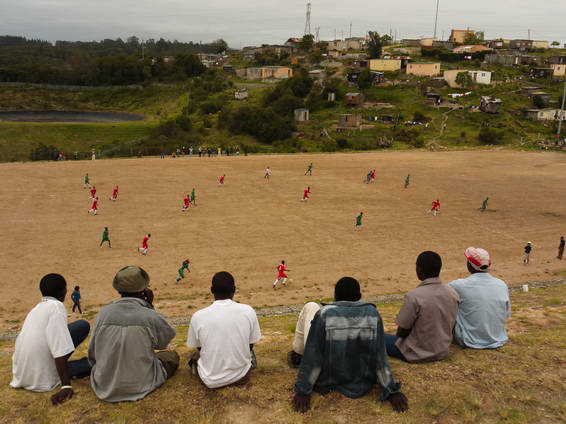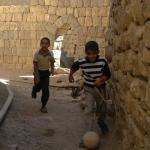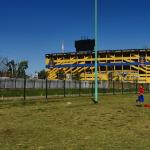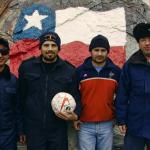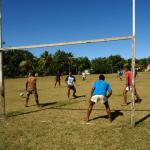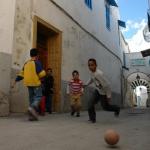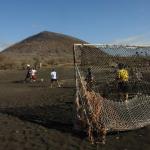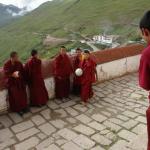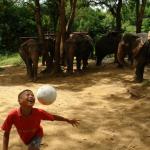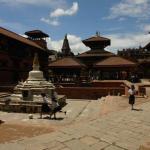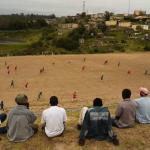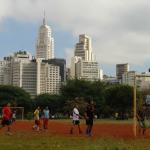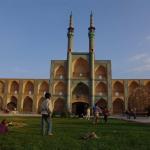Browsing through Caio Vilela's Futebol Sem Fronteiras: Retratos da bola ao redor do mundo
español português ελληνικά
Slideshow images and captions by Caio Vilela © 2009 Caio Vilela
.
No matter how many places I go to
I find that people are the same
Odysseas Elytis
.
Next to the football on our small screen, the football of the world cup and the championships, of the mega-sponsors, the competition and the billions of Euros, there's another football: the football of the children that play in vacant lots, of the people that run after a ball on the street.
A parallel reality: the game.
A simple reality where the rules are made up and accepted by everyone.
In the game, people leave their multiple real life roles behind -profession, education, social class- and simply become players, units and parts of the team at the same time.
Even time changes: it flows just like when we were kids, when the end of the game was marked by the sunset, by thirst or tiredness -and wasn't imposed by the clock.
As for space, there's no borders: it's the first thing we realize as we browse through Caio Vilela's book "Futebol Sem Fronteiras" (Football Without Borders).
The photographer has traveled all around the world -from Antarctica to the deserts of Egypt and from Mount Everest to the beaches of Brazil- capturing with his photographic lens moments, monuments, people.
As he was traveling, he must have met very different human characters, cultures, landscapes, climates, communication codes.
But there was always one common point of reference: football.
The same game, different places, different players, different means.
The football fields: exotic beaches, world heritage monuments, favelas, deserts, volcanoes, metropolises. The players: children, travelers, Tibetan monks, camel or elephant drivers, families. The raw materials: goal posts made of garbage nets, sticks or imaginary goal posts, professional balls or balls made of straws, sacks with rags.
The differences in means and the majestic surroundings is the first thing that strikes us when we look at the images and read Caio Vilela's remarks about the character and the meaning of football in every country.
However, when our eyes get satiated by the colors of the world, during the second reading of the book, what we see is similarities: the expressions in the faces and the movements of the bodies are very familiar to us.
In the dance of the players around the ball we recognize moments from our own experience and relive the joy of the game.
Page after page, our experience becomes one with the photographs of the book and the images liven up: we can hear the voices of the players, their laughter, we smell the street dust, we feel our chests panting.
And realize with a smile that whenever we go to, no matter how different people we come across, we will always be able to communicate with them by playing football.
Therefore, through Caio Vilela's "Futebol Sem Fronteiras" (Football Without Borders) we discover that street football -in contrast to the football of the green turf and the advertisements, that divides people into groups and brings forth historical, political and economical controversies or creates fake antagonisms- can become a common point of reference, communication and understanding.
A soccer ball brings us all together.

